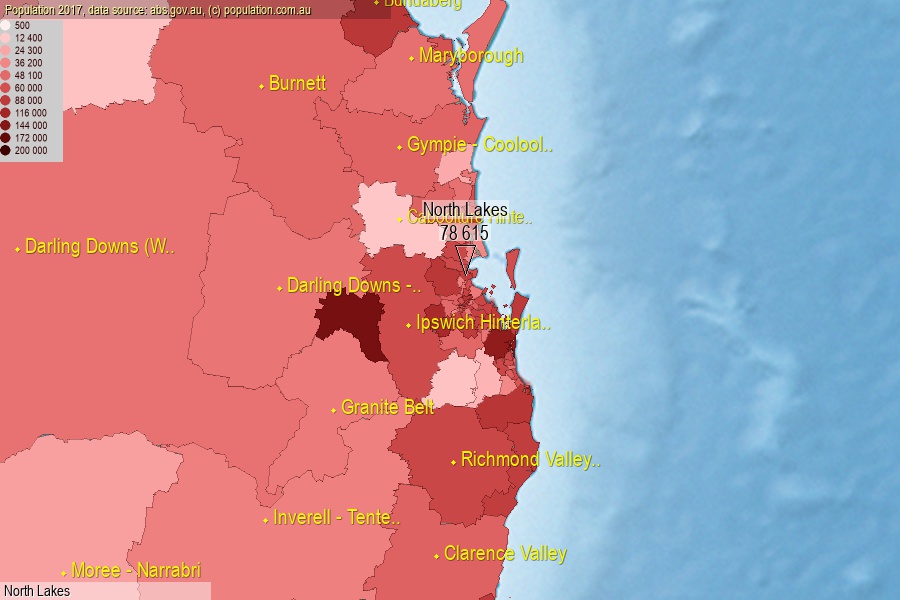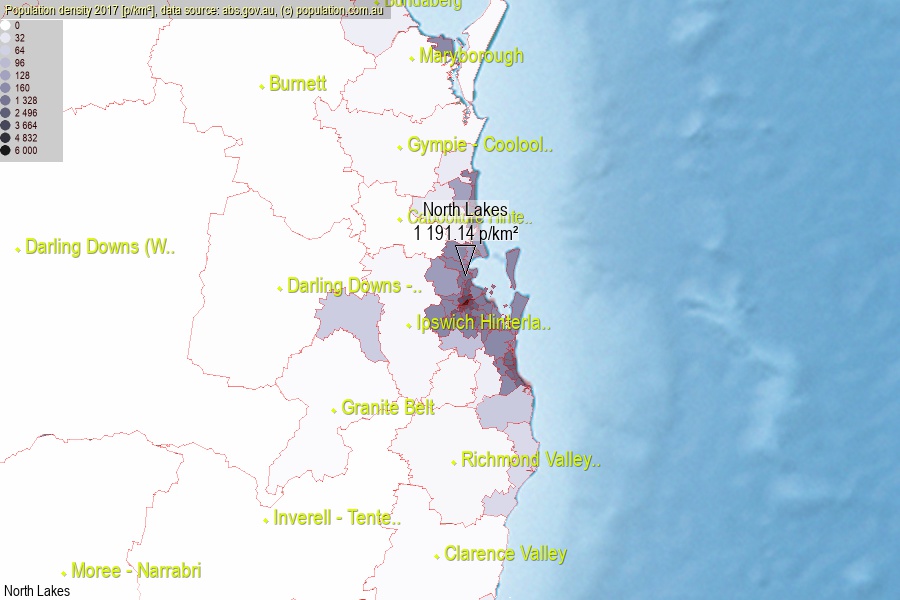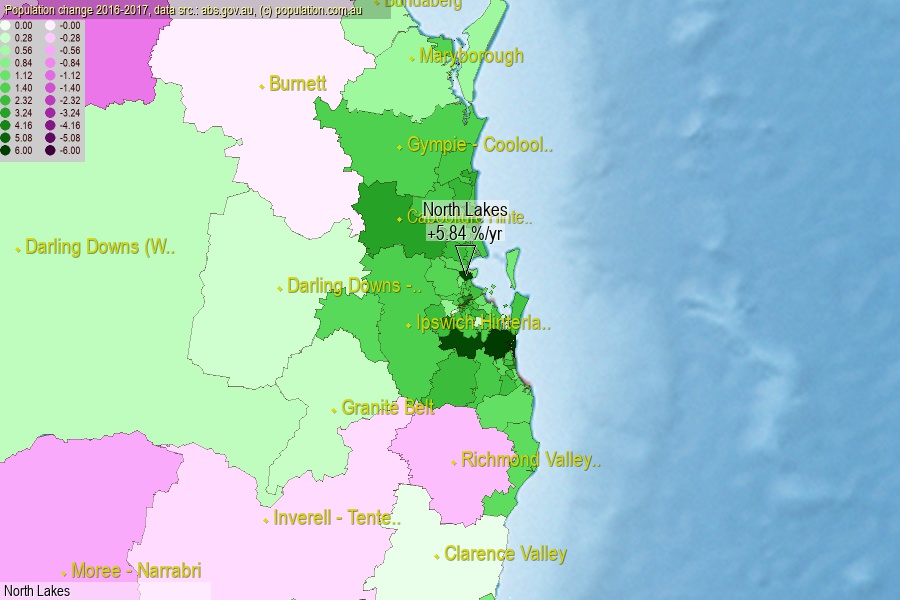 population.com.au
population.com.auLast official estimated population of North Lakes (as Statistical Area Level 3) was 78 615 people (on 2017-06-30)[2]. This was 0.32% of total Australian population and 1.575% of QLD population. Area of North Lakes is 66.00 km², in this year population density was 1 191.14 p/km² . If population growth rate would be same as in period 2016-2017 (+5.84%/yr), North Lakes population in 2025 would be 123 811. [0]



Click to enlarge. North Lakes is located in the center of the images.
Population [people], population density [p./km²] and population change [%/year] [2]
View borders » (new window) [4]
[1991-1992] +6.92 %/Y
[1992-1993] +4.83 %/Y
[1993-1994] +3.84 %/Y
[1994-1995] +4.89 %/Y
[1995-1996] +5.34 %/Y
[1996-1997] +3.94 %/Y
[1997-1998] +4.43 %/Y
[1998-1999] +4.76 %/Y
[1999-2000] +2.61 %/Y
[2000-2001] +5.62 %/Y
[2001-2002] +6.94 %/Y
[2002-2003] +8.08 %/Y
[2003-2004] +9.46 %/Y
[2004-2005] +7.58 %/Y
[2005-2006] +5.94 %/Y
[2006-2007] +10.50 %/Y
[2007-2008] +9.78 %/Y
[2008-2009] +9.08 %/Y
[2009-2010] +7.36 %/Y
[2010-2011] +6.51 %/Y
[2011-2012] +7.62 %/Y
[2012-2013] +6.57 %/Y
[2013-2014] +6.75 %/Y
[2014-2015] +7.26 %/Y
[2015-2016] +7.02 %/Y
[2016-2017] +5.84 %/Y
[0] Calculated with linear interpolation from officially estimated population
[1] Read more about SA3 and Australian Statistical Geography Standard (ASGS) on abs.gov.au
[2] Population data from Australian Bureau of Statistics (Population and density: 2017; change: 2016-2017)
[3] Digital Boundaries: Australian Statistical Geography Standard (ASGS) 2016.
[4] Border coordinates are simplifyed using Ramer-Douglas-Peucker algorithm.